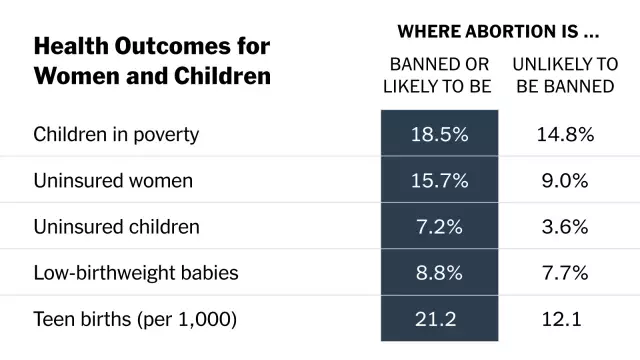- Author Rachel Wainwright [email protected].
- Public 2023-12-15 07:39.
- Last modified 2025-11-02 20:14.
No periods after abortion
Abortion is a procedure for the artificial termination of pregnancy, carried out either surgically or medically.

Pregnancy and its termination are a kind of violation of a woman's healthy menstrual cycle, causing powerful hormonal and physiological changes in the body. Normally, after an abortion, there are no periods for 3-4 weeks. Bloody discharge that occurs after the abortion procedure is not menstruation. Why is there no monthly period after the abortion? What are the periods after a surgical abortion? What makes menstruation different after a medabortion?
After an abortion, there are no menstruation: the norms and deviations of the woman's condition
Abortion is an external intervention in the natural course of pregnancy to terminate it. Pregnancy provokes multiple changes in the body. After fertilization and implantation of the egg, the woman's body is rebuilt, changing the hormonal background, to maintain the healthy development of the fetus. This period is characterized by the absence of menstruation. Abortion abruptly terminates pregnancy, exposing the female body to physical and psychological stress. One of the serious consequences of abortion is hormonal imbalance. A healthy female body usually recovers quickly after the procedure. Every woman should know that there is no period after an abortion, and spotting after the procedure (which can also take on the character of bleeding) is not menstruation. Bleeding after an abortion occurs due to mechanical damage to the cervical canal during its expansion, as well as to the inner layer of the uterus (endometrium) in the process of scraping. After an abortion, the uterine cavity is an extensive wound surface. Bloody discharge is a variant of the norm. Normally, a woman after an abortion does not have a period until the next cycle.
The day of abortion is considered to be the first day of a new menstrual cycle. If the termination of pregnancy has passed without complications, then the woman has no monthly periods after the abortion (the natural average duration of the menstrual cycle in women), then a new cycle begins. Many patients report a lengthening of the menstrual cycle after an abortion in comparison with the normal cycle. The lengthening of the menstrual cycle after termination of pregnancy can be observed against the background of excessive curettage, and accordingly, thinning of the endometrium with significant damage to its deep layers, up to the muscle layer. As a result of such scraping, adhesions are often formed in the uterine cavity, which can cause infertility in the future.
Normally, after an abortion, there are no periods for 25-35 days, which is the norm for a healthy woman's menstrual cycle. If menstruation occurs later than 35-37 days after the abortion, then the patient is advised to consult a doctor for additional examinations. The reason for the early and late onset of menstruation after an abortion can be:
- Hormonal disorders - requires medical correction with oral contraceptives;
- Inflammatory processes in the uterine cavity - additional examination and an appropriate course of treatment are required;
- Excessive trauma to the tissues of the uterus - recovery within 3-5 months after the abortion.
A deviation from the norm is the following woman's conditions:
- After an abortion, there are no periods for more than 35 days - this condition may indicate a preserved pregnancy, the onset of a new pregnancy, an incomplete abortion;
- Abundant bloody discharge after an abortion, which does not stop for more than 10 days - this symptom indicates incomplete scraping, the presence of fetal remains in the uterine cavity, severe mechanical damage to the cavity and cervix;
- Changes in the character, color, smell of discharge after abortion - discharge after an abortion should not have a sharp, unpleasant odor, acquire a different color, or cause discomfort. This condition indicates the introduction of infection into the uterine cavity and the development of endometritis.
What are the menstrual periods after an abortion: cycle recovery after surgical curettage
Normally, a woman after an abortion does not have periods for 30 days. Then a new menstrual cycle begins. What are the periods after a traditional surgical abortion? The first bloody discharge after an abortion is not menstruation. Their nature is determined by the period of termination of pregnancy, the degree of damage to the tissues of the uterus during the procedure, complications that have arisen both during the surgical intervention and after it. If the pregnancy is terminated by a mini abortion, then the procedure is accompanied by the least blood loss, the discharge after the abortion is insignificant, and the rehabilitation is much faster. Also, after an abortion, there is no monthly period for 28-30 days, then normal menstruation occurs, in terms of the abundance of bleeding, it does not differ from the patient's normal menstrual flow.
When curettage is performed, a large wound surface is formed in the uterine cavity, which explains the longer and more intense discharge after the procedure. Normal menstruation occurs a month after the abortion, however, menstrual flow is more scarce, which is explained by hormonal imbalance due to inhibition of ovarian function, since curettage is used to terminate pregnancy at a later date.

It should be remembered that the next ovulation after an abortion occurs 10-14 days later, as a result of which a healthy egg cell ready for fertilization is in the tubes. If there is no period after an abortion, which should occur according to the new menstrual cycle, then first of all it is necessary to exclude a new pregnancy by conducting home tests and ultrasound.
What are the periods after medical abortion: norms and violations in the patient's condition
Medical abortion is an interruption of gestation by sequential administration of drugs that provoke rejection and expulsion of the fetus from the uterus. What are the periods after the medabort? The first spotting appears within the first 2-4 hours after taking the first dose of drugs. Rejection of the fetus and its excretion from the uterus occurs against the background of profuse bleeding, which can last up to 10 days. Normal periods after a medical abortion begin with the next menstrual cycle, unless the next pregnancy occurs.
A condition in which there is no menstruation after an abortion is a variant of the norm for the female body, however, each patient should remember that after the artificial termination of pregnancy, the body remains capable of conception. Abortion provokes a reverse hormonal change in the body, which makes pregnancy possible in the first month after an abortion. A new pregnancy is one of the reasons why there is no period after an abortion. To normalize the cycle and to prevent a new pregnancy, patients are recommended to take oral contraceptives for 3-6 months.
YouTube video related to the article:
Found a mistake in the text? Select it and press Ctrl + Enter.






